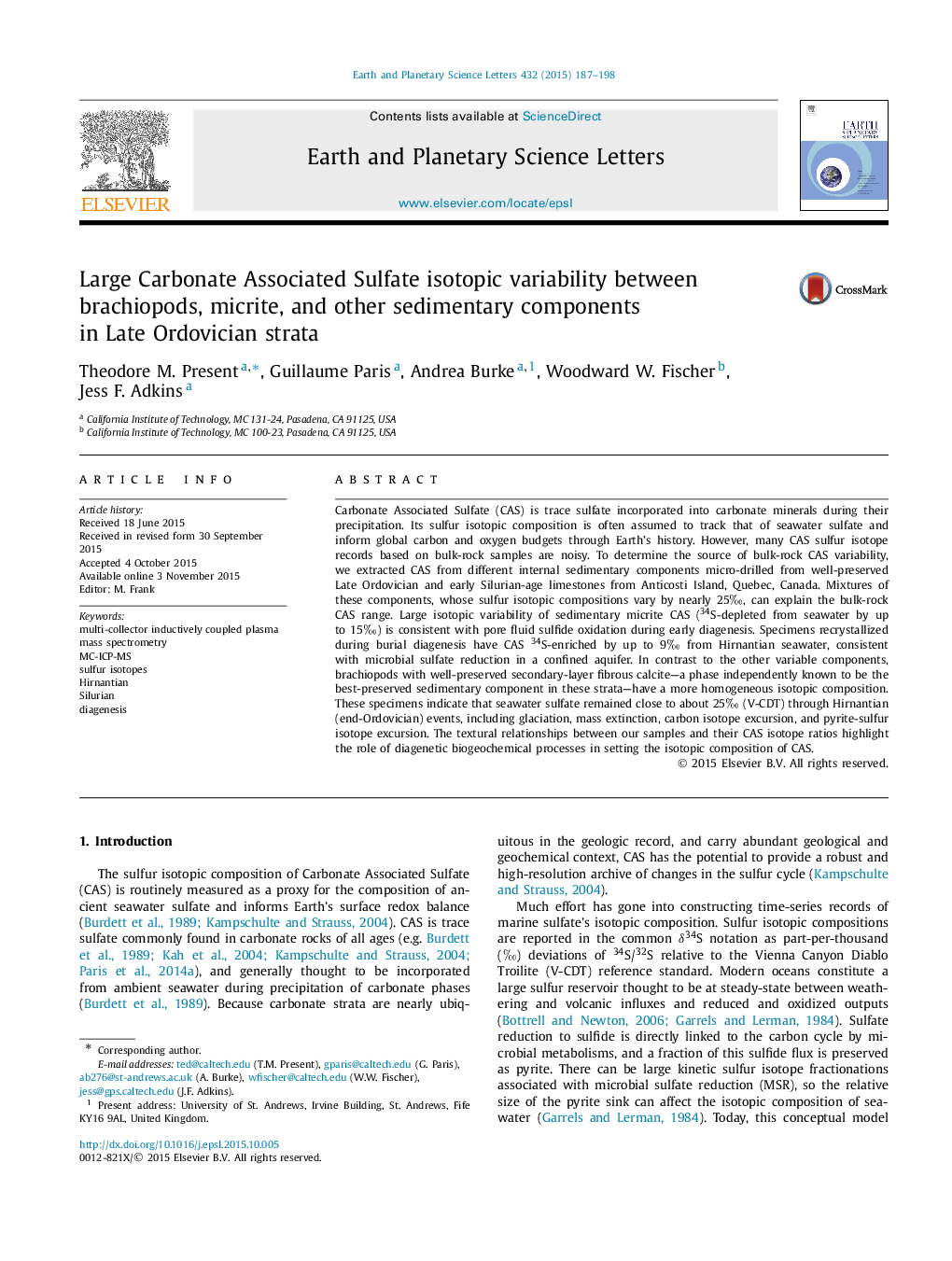| کد مقاله | کد نشریه | سال انتشار | مقاله انگلیسی | نسخه تمام متن |
|---|---|---|---|---|
| 6427833 | 1634724 | 2015 | 12 صفحه PDF | دانلود رایگان |
- Isolated small amounts of different components from Late Ordovician limestones.
- Measured texture-specific Carbonate Associated Sulfate (CAS) sulfur isotope ratio.
- A range of 25â° in CAS between components can explain bulk-rock CAS variation.
- CAS from well-preserved brachiopod calcite preserves Ordovician seawater sulfate.
- Variability of micrite and cement components reflects diagenetic processes.
Carbonate Associated Sulfate (CAS) is trace sulfate incorporated into carbonate minerals during their precipitation. Its sulfur isotopic composition is often assumed to track that of seawater sulfate and inform global carbon and oxygen budgets through Earth's history. However, many CAS sulfur isotope records based on bulk-rock samples are noisy. To determine the source of bulk-rock CAS variability, we extracted CAS from different internal sedimentary components micro-drilled from well-preserved Late Ordovician and early Silurian-age limestones from Anticosti Island, Quebec, Canada. Mixtures of these components, whose sulfur isotopic compositions vary by nearly 25â°, can explain the bulk-rock CAS range. Large isotopic variability of sedimentary micrite CAS (34S-depleted from seawater by up to 15â°) is consistent with pore fluid sulfide oxidation during early diagenesis. Specimens recrystallized during burial diagenesis have CAS 34S-enriched by up to 9â° from Hirnantian seawater, consistent with microbial sulfate reduction in a confined aquifer. In contrast to the other variable components, brachiopods with well-preserved secondary-layer fibrous calcite-a phase independently known to be the best-preserved sedimentary component in these strata-have a more homogeneous isotopic composition. These specimens indicate that seawater sulfate remained close to about 25â° (V-CDT) through Hirnantian (end-Ordovician) events, including glaciation, mass extinction, carbon isotope excursion, and pyrite-sulfur isotope excursion. The textural relationships between our samples and their CAS isotope ratios highlight the role of diagenetic biogeochemical processes in setting the isotopic composition of CAS.
190
Journal: Earth and Planetary Science Letters - Volume 432, 15 December 2015, Pages 187-198
